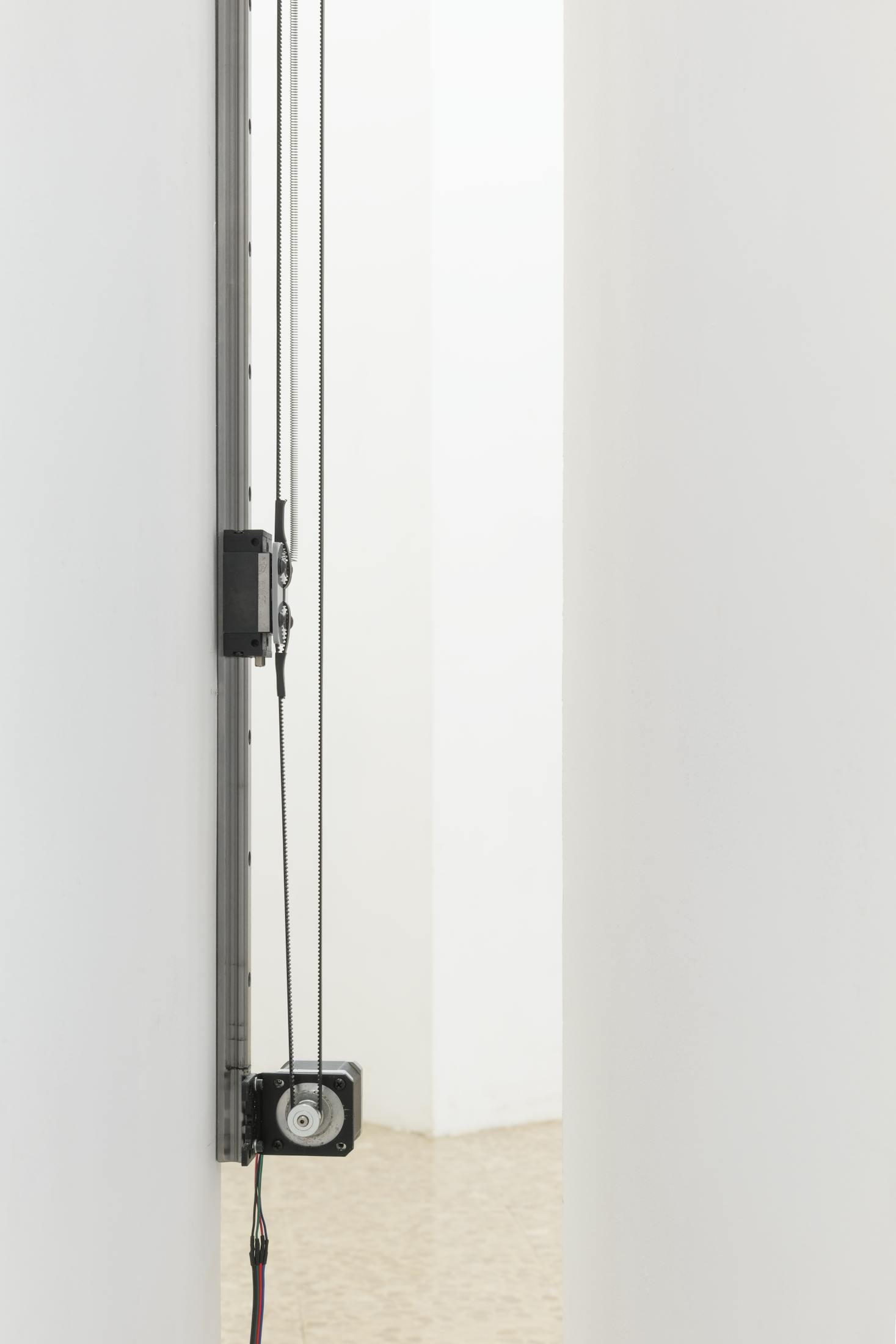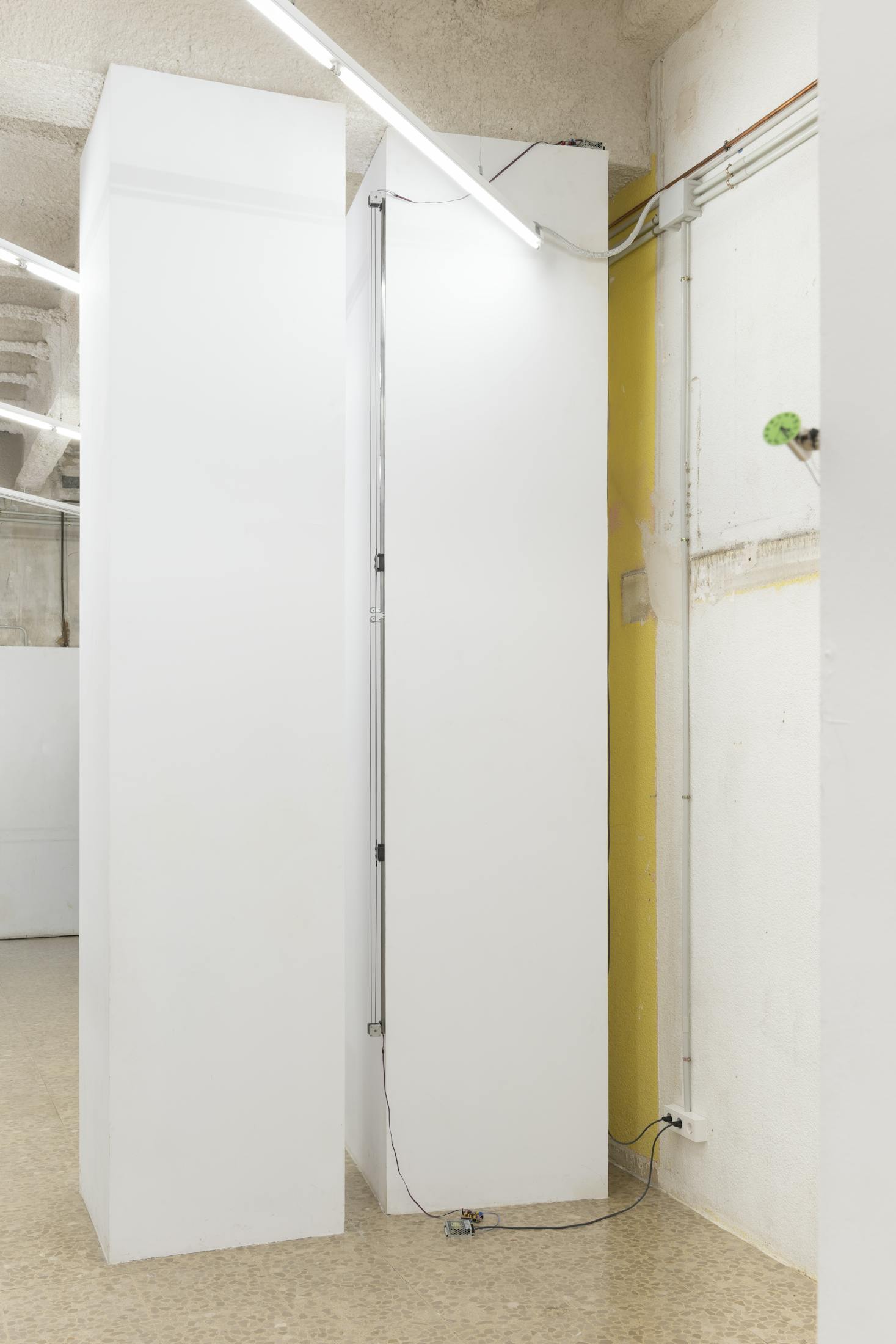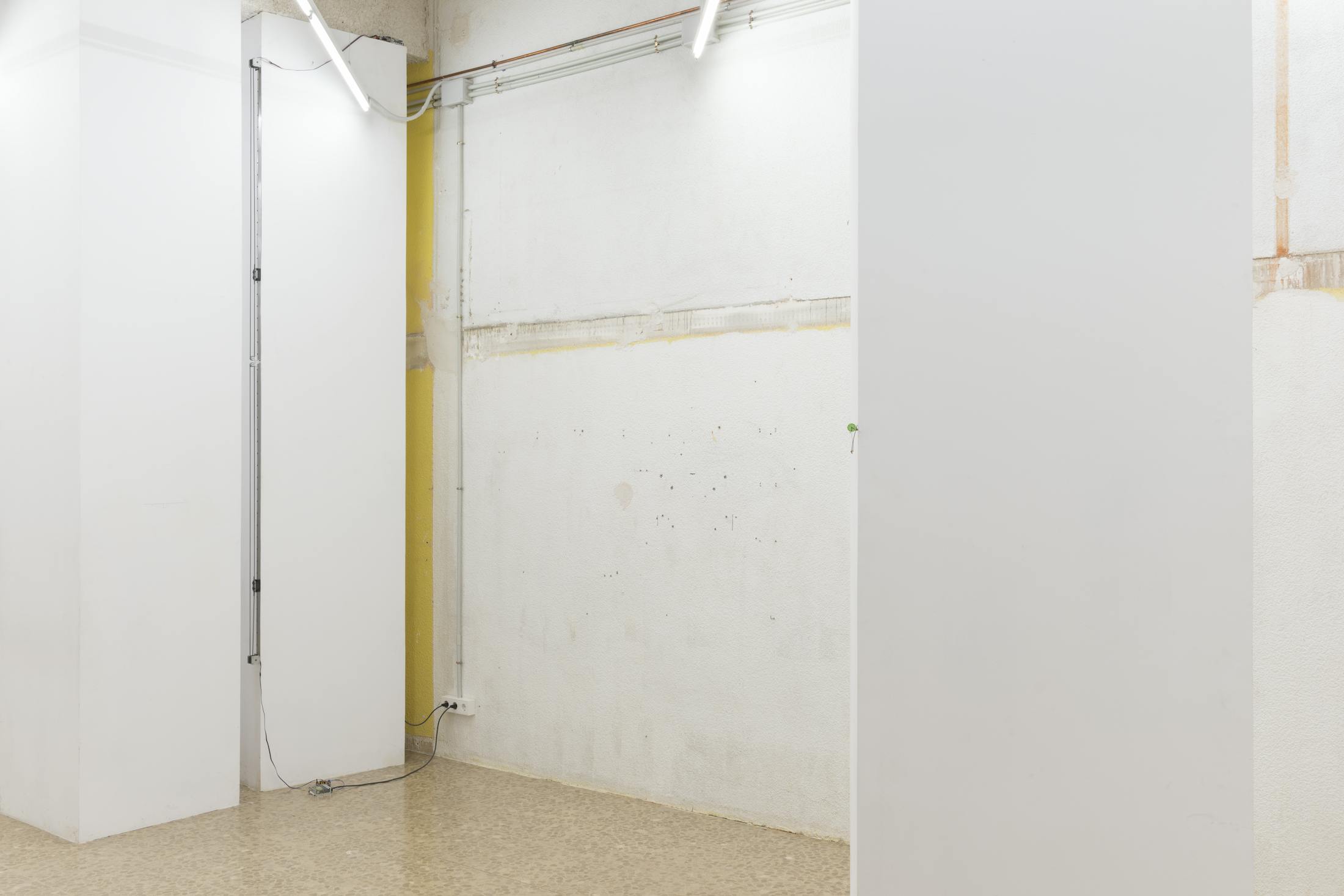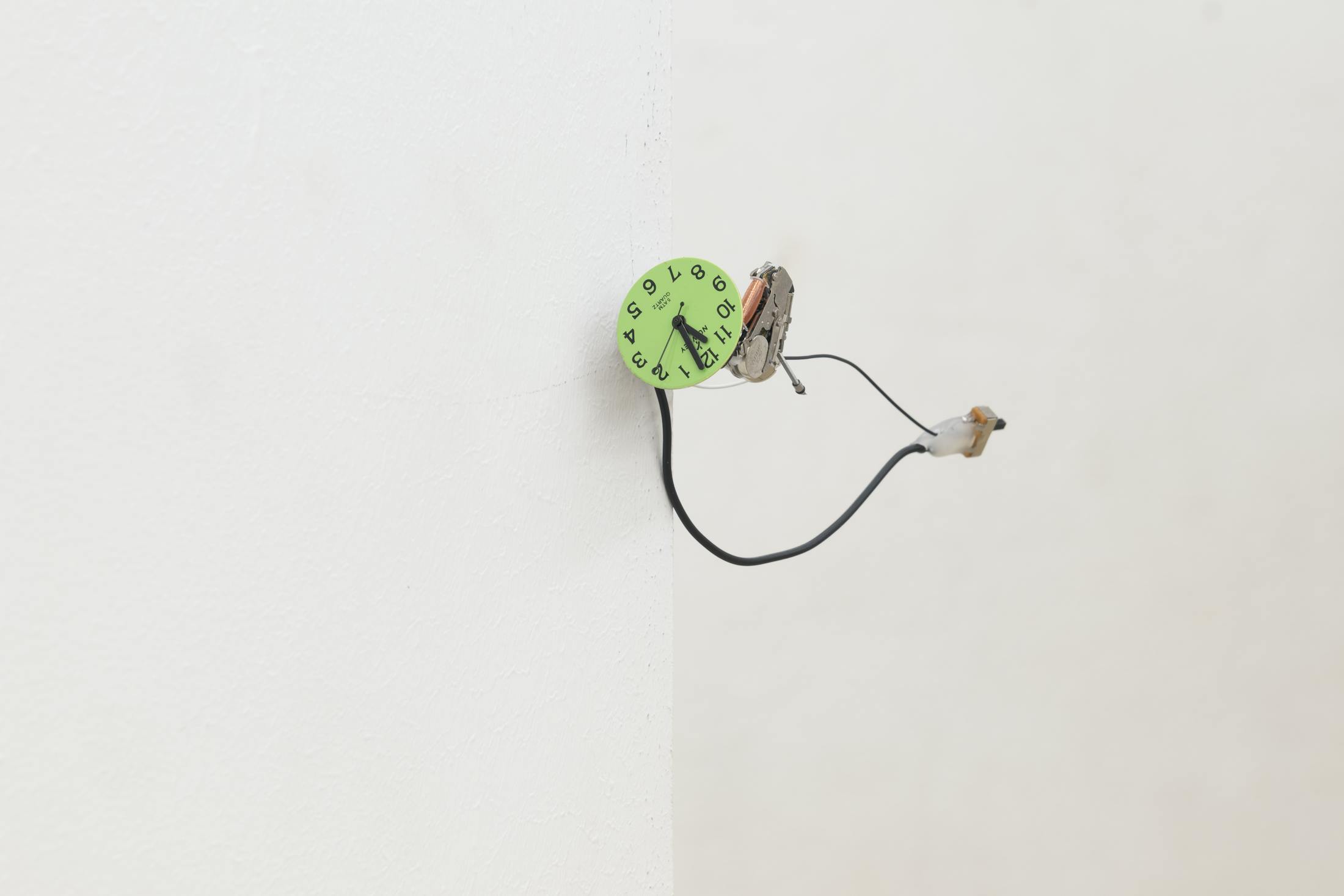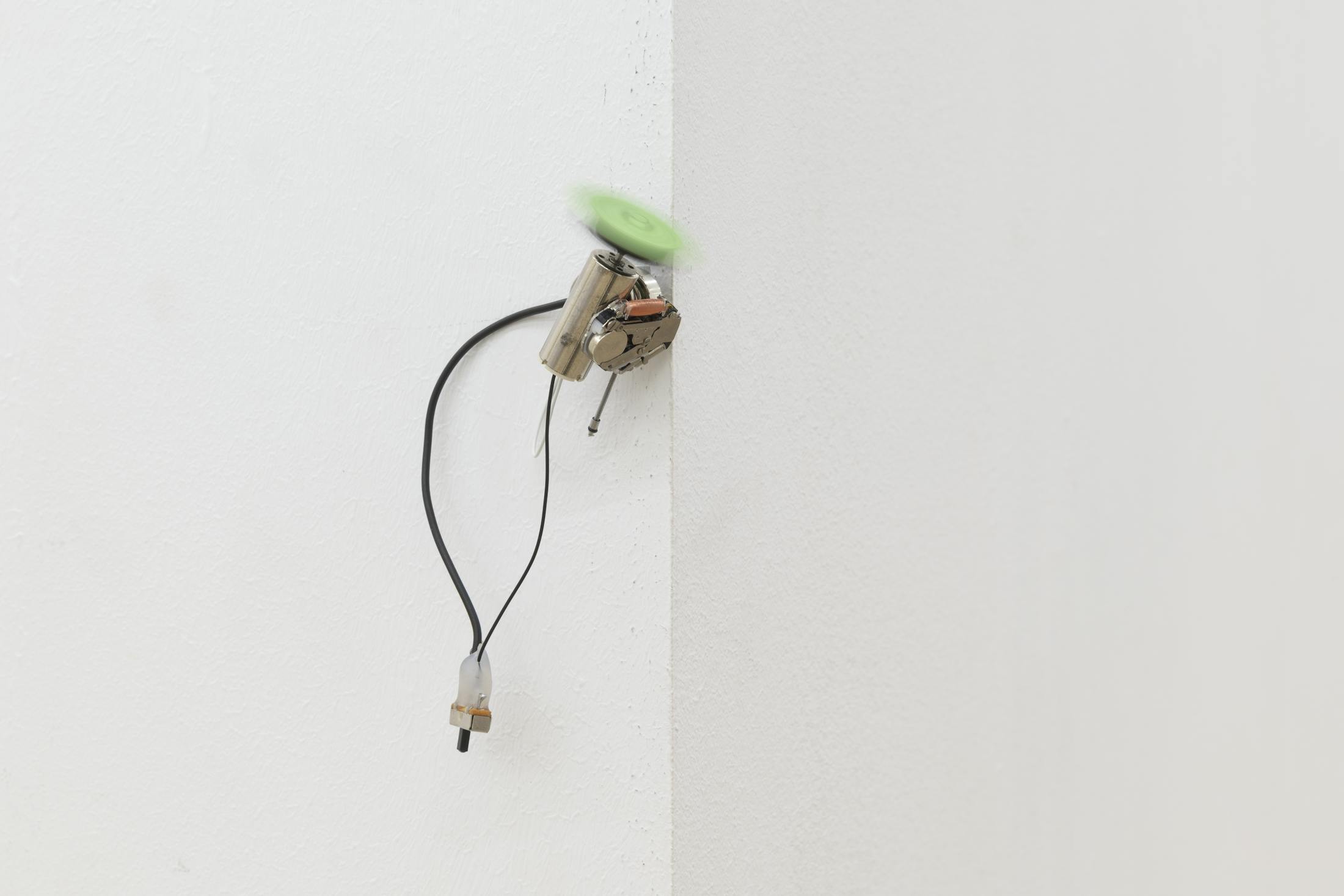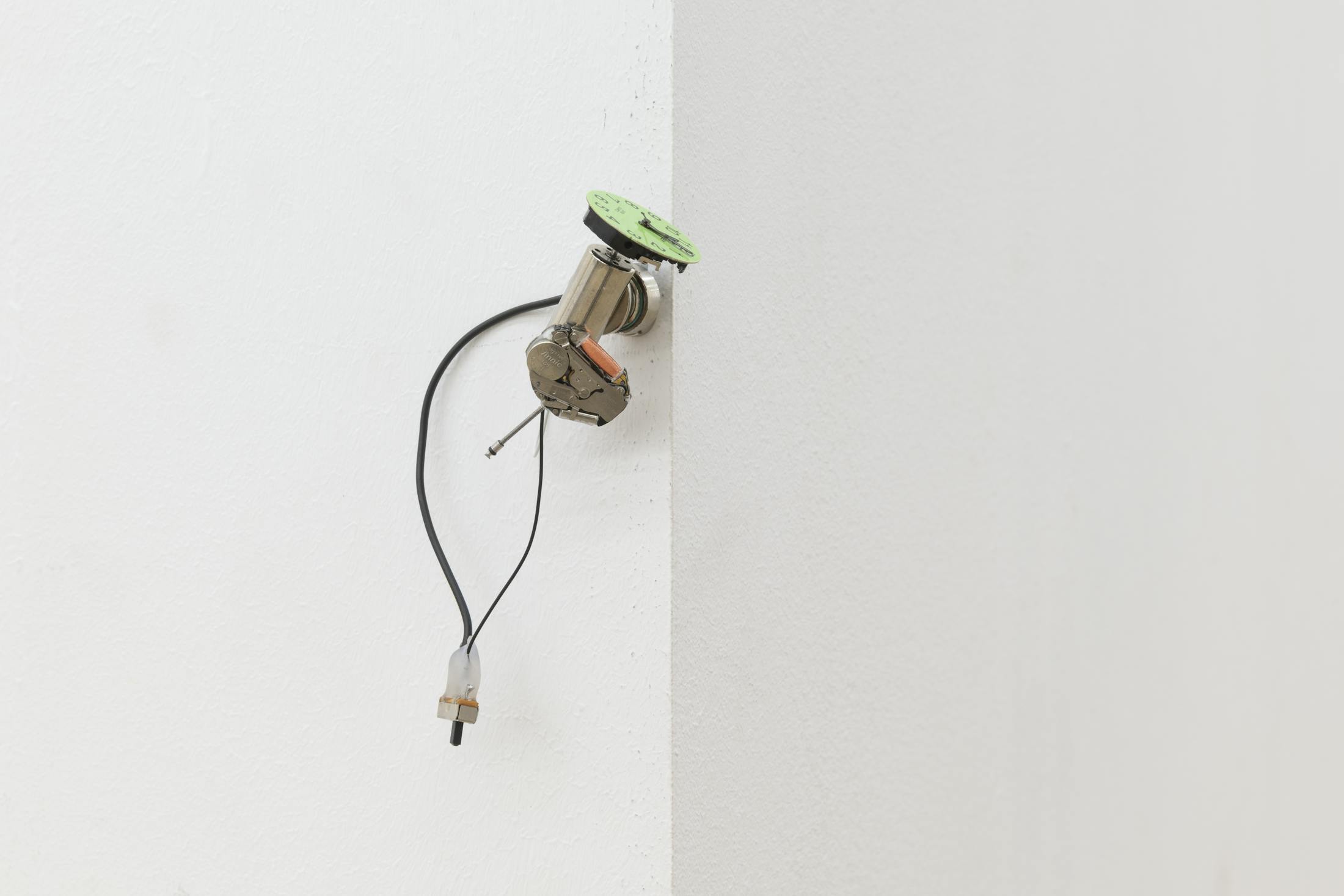A corner, by definition, is where two sides, usually of a building, converge. It is also the angle formed by the meeting of two walls or surfaces, but it is simultaneously a secluded, rather small place, a recess or hideaway. Both definitions share a fundamental spatial dimension, architectural and structural. Both the corner and the nook refer simultaneously to a crossing, a union, but also to a cut—only disparate elements can meet. Exposed crossroads or a hidden shelter, both unite the distant in an encounter that always promises separation.
The exhibition A Corner in Wheat presents a dialogue between Beatriz Olabarrieta and Mario Santamaría through a series of spatial interventions centered around the concept of cutting. Inspired by the unique architecture of Dilalica and the traces of its historical memory, both artists introduce subtle shifts across various elements—architectural, mechanical, symbolic… Once reassembled, these elements leave behind material traces that create moments of disorientation within the space, drawing attention to objects that explore a logic of disassembly and reassembly into new forms.






